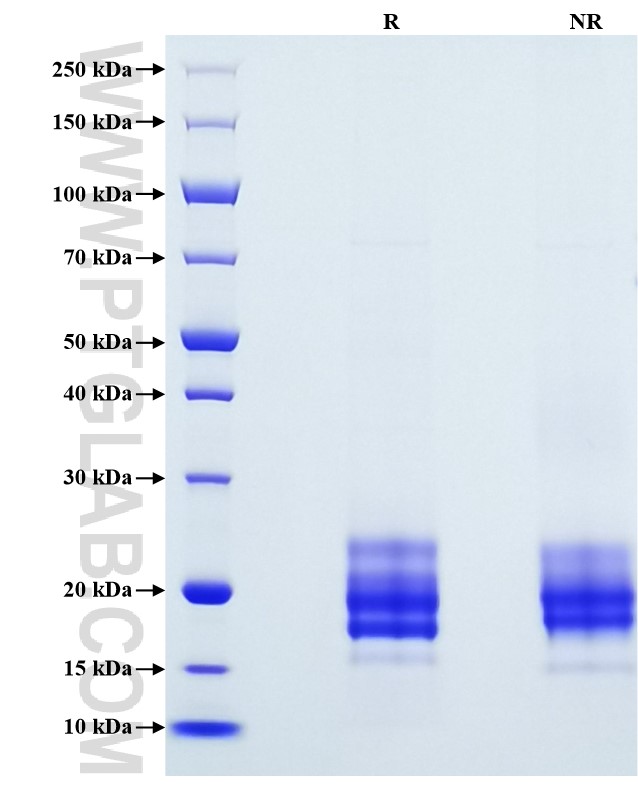Recombinant Mouse Flt3 ligand protein (His Tag)
种属
Mouse
纯度
>90 %, SDS-PAGE
标签
His Tag
生物活性
未测试
验证数据展示
产品信息
| 纯度 | >90 %, SDS-PAGE |
| 内毒素 | <0.1 EU/μg protein, LAL method |
| 生物活性 | Not tested |
| 来源 | CHO-derived Mouse Flt3 ligand protein Gly27-Arg188 (Accession# P49772-1) with a His tag at the C-terminus. |
| 基因ID | 14256 |
| 蛋白编号 | P49772-1 |
| 预测分子量 | 19.2 kDa |
| SDS-PAGE | 17-25 kDa, reducing (R) conditions |
| 组分 | Lyophilized from 0.22 μm filtered solution in PBS, pH 7.4. Normally 5% trehalose and 5% mannitol are added as protectants before lyophilization. |
| 复溶 | Briefly centrifuge the tube before opening. Reconstitute at 0.1-0.5 mg/mL in sterile water. |
| 储存条件 |
It is recommended that the protein be aliquoted for optimal storage. Avoid repeated freeze-thaw cycles.
|
| 运输条件 | The product is shipped at ambient temperature. Upon receipt, store it immediately at the recommended temperature. |
背景信息
Flt-3 Ligand, also known as FLT3L, is a cytokine that is of paramount importance in the proliferation of primitive hematopoietic progenitors. By acting on its receptor Flt-3 (CD135) and synergizing with other cytokines, FLT3L plays a pivotal role in promoting myeloid and lymphoid progenitors proliferation and differentiation. Besides regulating the development of immune cells during steady-state conditions, FLT3L levels are raised upon inflammation. For example, increased serum levels of FLT3L have been observed during malaria in mice. Previous studies have shown that mice lacking FLT3L have deficient hematopoiesis function, resulting in reduced numbers of hematopoietic progenitor cells, dendritic cells, and natural killer cells.
参考文献:
1. Solanilla A, et al. (2000). Leukemia. 14(1): 153-162 2. Ramos MI, et al. (2014). Autoimmun Rev. 13(2):117-124 3. Pierre Guermonprez, et al. (2013). Nat Med. 19(6): 730-738 4. Sara M. Parigi, et al. (2018). Scientific Reports. 8: 154 5. McKenna HJ, et al. (2000). Blood. 95(11): 3489-3497.
